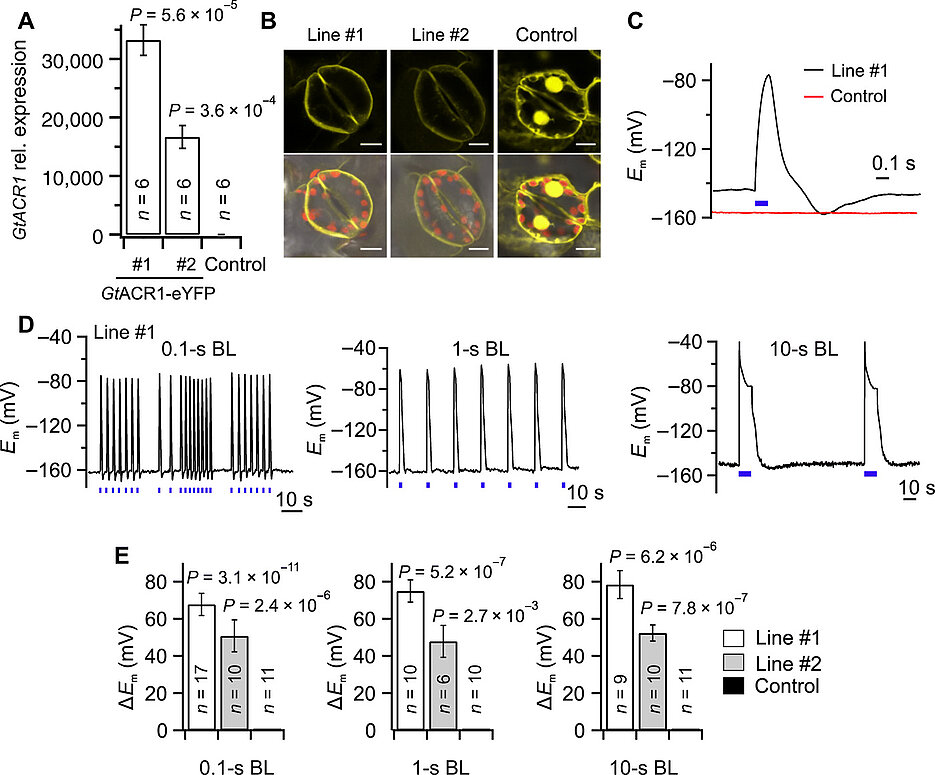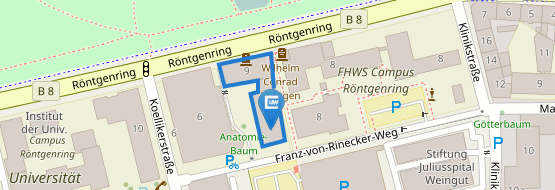Optogenetic control of the guard cell membrane potential and stomatal movement by the light-gated anion channel GtACR1
09.07.2021Optogenetic control of the guard cell membrane potential and stomatal movement by the light-gated anion channel GtACR1
Shouguang Huang, Meiqi Ding, M. Rob G. Roelfsema, Ingo Dreyer, Sönke Scherzer, Khaled A. S. Al-Rasheid, Shiqiang Gao, Georg Nagel, Rainer Hedrich, Kai R. Konrad
SCIENCE ADVANCES Vol 7, Issue 28, 2021
Guard cells control the aperture of plant stomata, which are crucial for global fluxes of CO2 and water. In turn, guard cell anion channels are seen as key players for stomatal closure, but is activation of these channels sufficient to limit plant water loss? To answer this open question, we used an optogenetic approach based on the light-gated anion channelrhodopsin 1 (GtACR1). In tobacco guard cells that express GtACR1, blue- and green-light pulses elicit Cl− and NO3− currents of −1 to −2 nA. The anion currents depolarize the plasma membrane by 60 to 80 mV, which causes opening of voltage-gated K+ channels and the extrusion of K+. As a result, continuous stimulation with green light leads to loss of guard cell turgor and closure of stomata at conditions that provoke stomatal opening in wild type. GtACR1 optogenetics thus provides unequivocal evidence that opening of anion channels is sufficient to close stomata.


